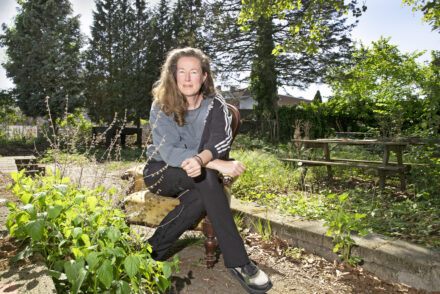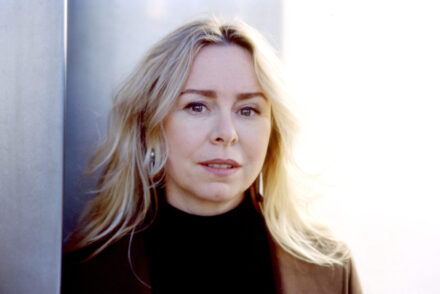Where do our tuition fees go?
Susanne Finke and Marlies de Brouwer unraveled for Univers where tuition fees go. Susanne tells how she experienced this investigation.
Have you ever asked yourself “Where do our tuition fees go?”
As a duo of one international student, me, Susanne Finken (22) and one real Dutch girl, Marlies de Brouwer (22) we teamed up for the Data Journalism Practice course, part of the Communication and Information Sciences master at Tilburg University. At Univers, our task would be to chase real data for our own little investigation – our quest! What topic would be more suitable than investigating where the University spends “our” money? We pay taxes and tuition fees which support the university and our studies. But where exactly does this money end up?
To answer this question we would have to investigate the financial related data and reconstruct the complex money flow system within the university. Part of the task consisted in deciphering technical terms, contact and interview all kinds of important people and distinguish between money spent on education and money spent on other things, such as research. We assumed that the money spent on education was the “good” money, since it would flow back into the quality of our education. Therefore, it was important to distinguish the money distribution between education and research.
We would not have expected this topic to turn out as complex and headache causing as it was in the end. Blurry, unclear and exaggeratedly technical information created a wall between the research and the answers. Budgets, answers, money flow… Why is everything so vague? Throughout all the information seeking, we had to fight and be persistent, both with ourselves and the information sources. But it was worth it. We discovered that our tuition fees, together with the money from the government, are equally spent on education and research, we fought “phone-phobia”, we explored hidden corners of the university buildings, we made new friends and possibly a few enemies. But…
One step at a time
Are there any rules about how the money should be spent? Is there a mandatory distribution between education and research? Who has a say in the distribution? Long hours have been spent researching the big quantities of information that, in the end, were not as informative as hoped for.
Finding out that there are no specific rules concerning the money distribution, we could not use this as a starting point for our research. With some aid from our little helpers, we obtained the allocation model from three schools.
Jungle of Dutch legislation, verdeelmodel and begroting
Imagine yourself as a professional tennis player, standing in front of a chemistry table and being asked to find the formula for eternal youth. That is how we felt, as communication students facing the weirdest tables with numbers and technical terms. How were we supposed to make sense out of this? We needed a way to structure the information we had and make it understandable in the broader picture of our research question.
Each school has its own way of presenting the data – differently structured tables and different kinds of information make a comparison between schools nearly impossible for us. It’s time to ask some questions!
After getting in touch with a few schools, we ended up making contact with the controller of the allocation model of Tilburg University, Henk van Gerwen. During an interview, we were able to ask most of our questions and get many answers and clarifications. The whole interview was about the allocation model of the university, how it works and which criteria are used. Basically – “It is up to the school how to spend the money. But at the end they have to perform (…) Schools can decide themselves whether they spend it on education or research (…) In principle, they can do what they want to do.”
At the same time, old questions remained and new questions emerged, concerning the particular situation of each school. What do they mean with “educational related research”? Is that education or research?, Why is there so little control over the different schools?, What happens if the schools don’t achieve their goals? And… Where do our tuition fees go?!
We probably couldn’t have chosen a worse time to work on this investigation. The whole university is, at the moment, going through a change of the internal and external allocation model. This means that the parameters used to distribute the money are changing, starting from 2013. With the new model, factors like the number of students or diplomas become more relevant and, in addition to that, a great importance is given to the strategic plan of the university and the goals that are set for each school.
“Will we get in trouble for this?”
Walking around campus to find hidden offices to interview “behind the scenes” actors about topics they would rather not talk about is not the greatest feeling. Often, we would’ve preferred sitting in the sun while eating an ice-cream. But we were on a mission!
The university gives a certain amount of money to each school and, as long as the schools achieve their goals, it is up to them how they spend this money. There is a great independency of each school and control from the university only happens at a final stage: did the school achieve the goals or not?
All the numbers, tables and data continue to be quite confusing and, to avoid drowning in the information chaos, we sketched a visualization. Many arrows, colors and text boxes later, we were still not closer to answering our main questions – How is the money distribution between education and research made? What happens to our tuition fees?
“Maybe they [the schools] tell each other to shut all our calls and e-mails down!”
Only experts within each school would be able to give us clarifications about this, given that there is no control from the outside. Therefore, we started to contact the controlling and planning responsible from each of the schools. After many phone calls, e-mails, forwarding, rejections, no answers and cancelled appointments, we were able to get some further information from TSB, TSH and TST. According to these schools, we were not quite on the right track.
Apparently, with the new allocation model, a new way of thinking has been introduced within the university. A greater importance is given to teaching quality and educational excellence. This forced the schools to reduce their focus on research and make a more equal distribution between education and research.
“Are we still going to get our diplomas after this?”
The whole task of investigating the universities financial matters felt like a dangerous mission. No one really wanted to talk to us, worries and skepticism emerged among the responsible people from the university and schools – “Did any of the other schools talk to you about this?”.
During this whole process it was hard to keep in mind what really matters. There are a lot of loose ends and our focus has been pushed around several times. If you are interested in a more technical and detailed explanation about our results and where your tuition fees are actually spent, check out the article in the Univers Magazine.
The more answers and information we obtained, the more questions and doubts emerged. Why was it so difficult to find information and to make sense out of it? The language they used is very technical and the different formats across the schools do not make extracting relevant information easier. The records of how the money is spent are not open for public. The only way of guessing how the money is spent, is by analyzing the strategic plan of the university and the schools. But what is the point of making such a secret out of it? We still don’t know why each school adapts a certain model and how much money they really use to achieve their goals.
It is not possible to draw a clear line between investment of schools into education and into research. But, even though the outcomes are blurry, we are able to say that, with the arrival of the new model, a new way of thinking has been introduced, leading to a greater importance of education and to a balanced distribution of the 1st money stream between education and research. An additional focus on improving the teaching staff and to raise the quality of the education will, hopefully, translate into benefits for all of us. It is important to keep in mind that the changes don’t happen instantly and that the first best solution is nearly impossible to achieve. Many compromises have to be made and a greater mutual understanding is needed to work towards the goals of the university.
Our personal outcome…
This adventure is over and the real world has opened up to us. Business, money and achievements rule the (university) world. We learned some important lessons: Data can tell us more about the world than being just numbers, approaching information sources requires strategy, sensibility and luck and phone calls are not plain dangerous and evil – at least most of them are not. As a data journalist, you can use all the collected information to make conclusions but, in the end, you should have an expert clarifying and saying them out loud.
So what is the answer to our initial question? Changes are happening and education is gaining in importance. It is impossible to disentangle the educational area and the research area, both go hand in hand and, especially at a master level, the education benefits from the research.
What concerns my part, as an international student, I feel like a real Dutch expert now! I have broadened my vocabulary significantly. If I ever should be asked about Eerste- tweede- derde geldstroombaten, Onderzoek, Onderwijs, Vaste voet (or, as we call it, fast food!), Voorafnames, Fonds Beleidsinitiatieven, Prestatieafspraken or Tjonge jonge, I am able to tell you all about it!
It is hard to let go of this project but our time is over. There are many more things to be investigated. If you decide that you want to play detective after reading about our journey, we can give you some orientation and introduce you to some friendly people who would be happy to answer your questions (or not!).






